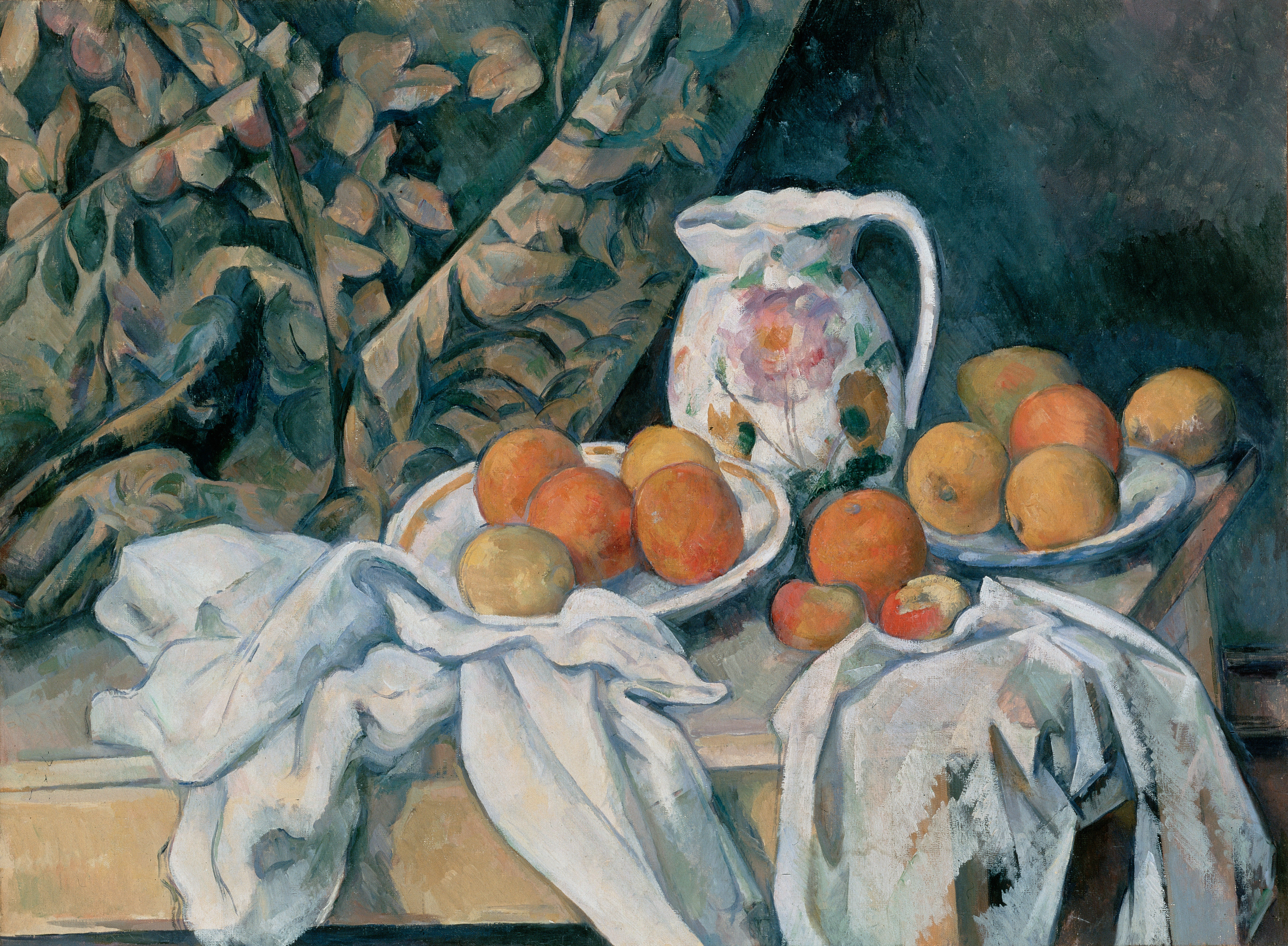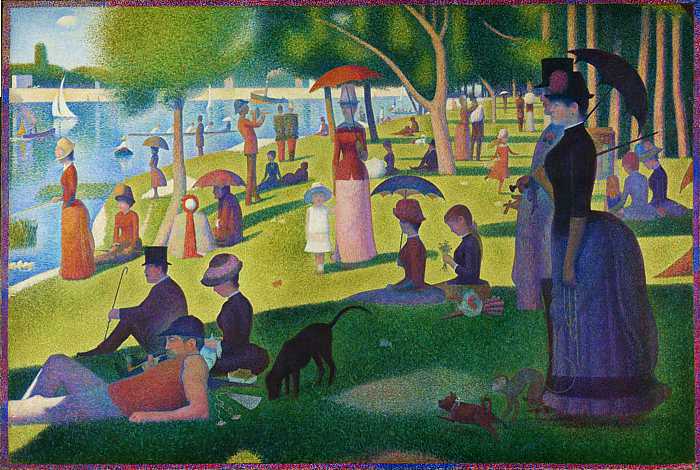Lecture: Cézanne's Doubt

Cézanne's Doubt | March 2016

timeline
- 1839 born
- 1856 studies painting and the école des beaux-arts
- 1862 meets Monet and Pissaro
- 1872 spends two years working with Pissaro in Pontoise
- 1874 first exhibition
- 1904 first solo show in Paris
- 1906 dies after a long session painting outdoors
Cézanne's life

- paid close attention to nature and to color
- inhuman character of his paintings
- devotion to the visible world
- flight from the human world, alienation of his humanity
Cézanne's teachers : Pissaro, 1872
.jpg)
.jpg)
Cézanne's teachers : Monet


How much did Cézanne distort nature?
- what do we mean by distort?
- Did he use a perspective system?
- what scale did he use?
- how is the viewer (you) situated to the subject?
- How naïve is Cézanne -- is he simply painting what he sees or does he use a system? or an anti-system?
- what is the context -- what was "normal" painting like in
Impressionism vs. Cézanne

impressionism
- seven colors of the spectrum
- local color of surrounding objects
- appearance of its complements in color
- break down of local color by juxtaposing rather than mixing colors
Cézanne attempts to recover the object from being lost in relationships to the atmosphere and to other objects.
- objects appear to be illuminated from within.
- Cézanne's eighteen colors
- Use of warm colors, the glow of object within
- Not break up of tone but graduated colors, close to objects form.
- "aiming for reality while denying himself the means to attain it"
- following contour without outline to enclose color
- no perspectival arrangement
BERNARD: "But aren't nature and art different?"
CÉZANNE: "I want to make them the same. Art is a personal apperception, which I embody in sensations and which I ask the understanding to organize into a painting."'
... one cannot thereby conclude that his painting is a phenomenon of decadence and what Nietzsche called "impoverished" life or that it has nothing to say to the educated person.
LIVED PERSPECTIVE vs GEOMETRIC PERSPECTIVALISM
- objects close at hand are smaller and far away larger than in photo
- circle seen obliquely oscillates around an ellipse
- freeze successive distortions and perspectives by painting them
- global, perspectival distortions not in themselves but to see them as an impression of emerging order, object in act of appearing
- geometric outline is limit to which the object recedes in depth
- Depth- thing in its inexhaustible reality, full of reserves
Before Distinction between Sensations.
Not five senses but one, sensing
"Cézanne's painting suspends the habits of thought and reveals the base of inhuman nature upon which man has installed himself."
Not a separate life in each consciousness, but an expressed relationship. A proposal.
The painter recaptures and converts into visible objects what would, without him, remain walled up in the separate life of each consciousness: the vibration of appearances which is the cradle of things. Only one emotion is possible for this painter—the feeling of strangeness— and only one lyricism—that of the continual rebirth of existence.
"Conception" cannot precede "execution." Before expression, there is nothing but a vague fever, and only the work itself, completed and understood, will prove that there was something rather than nothing to be found there.
[He] wanted nevertheless to portray the world, to change it completely into a spectacle, to make visible how the world touches us.
LAB: let's make one!
work together as a group to arrange the fruit and plates on the tables in front of you. your job is to reproduce Cézanne's view as well as possible. Discuss strategies, assemble your image and upload it here

